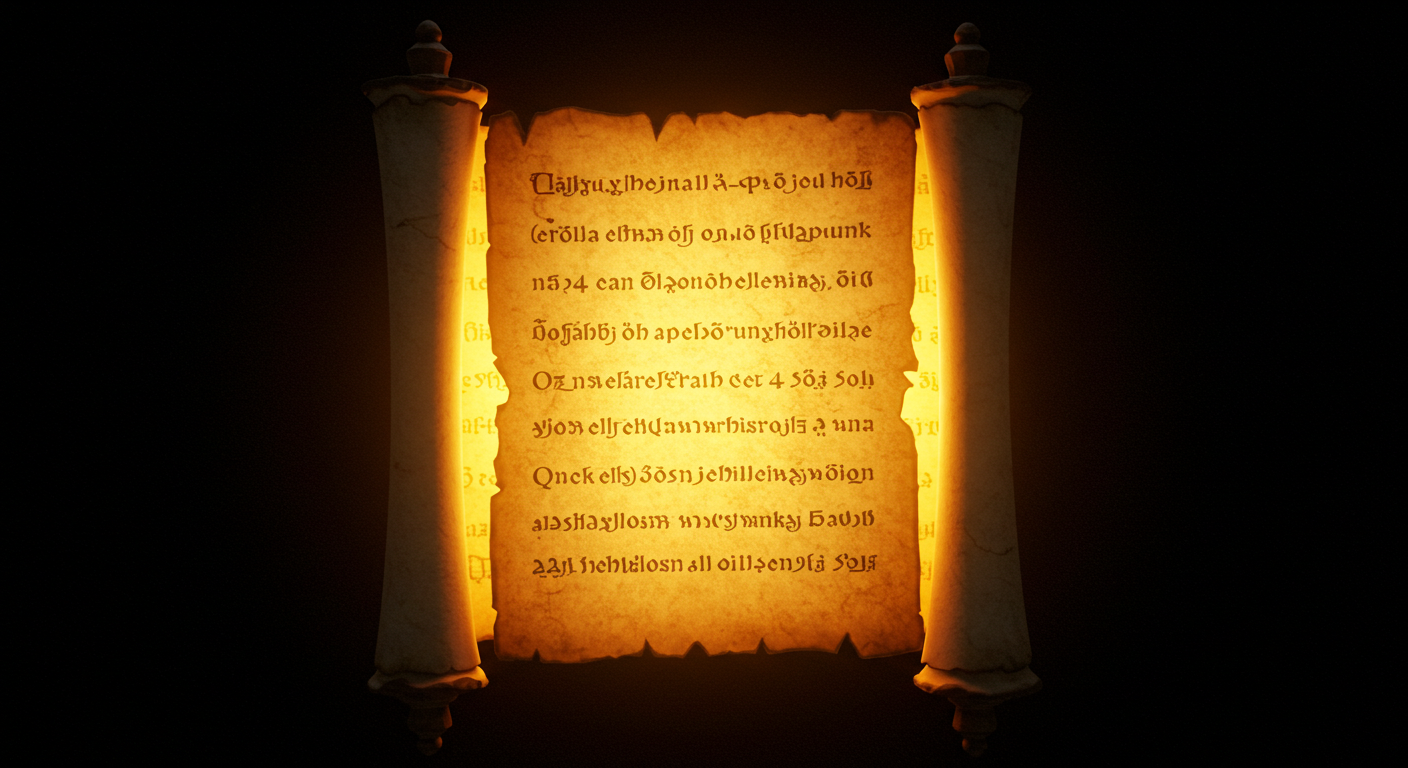Explore the profound meaning behind Daniel’s vision of the man in linen, with symbolic imagery and theological insights. Dive into its relevance for today’s readers.
The Vision Of The Man In Linen: Who Was He? – Daniel 10:5-6
Introduction to Prophetic Visions
Definition of Prophetic Visions
Prophetic visions are powerful, divine encounters where individuals, often prophets, receive messages from God. These messages frequently transcend the ordinary, using complex and vivid imagery to convey deeper spiritual truths. They’re not just fleeting dreams but are significant revelations meant to guide, warn, or inform God’s people about imminent or long-term future events. In the Bible, these visions serve as conduits between the divine and the human realm, providing insight into God’s will and plan.
Purpose of Prophetic Visions
God used prophetic visions to communicate intricate messages that often couldn’t be conveyed through ordinary discourse. These visions served multiple purposes: offering guidance, delivering judgments, providing hope, and revealing future events. They were central to the prophetic mission, ensuring that God’s messages were unmistakably clear and memorable. Importantly, these visions validated the authority of the prophet, setting them apart as chosen messengers of God.
Historical and Cultural Context
To fully grasp the profound nature of prophetic visions, it’s essential to understand the historical and cultural backdrop against which they occurred. These visions took place in ancient times marked by specific religious practices, political turbulence, and social norms. Understanding the life and times of these ancient prophets, such as Daniel, helps in comprehending the nuances and significance of their visions. It’s a journey into a world where divine intervention was part of the everyday, and where celestial messages often steered the course of history.
Context of Each Prophetic Vision
Scriptural Background
The vision of the man in linen is found in Daniel 10:5-6, a passage rich with symbolic imagery and profound meaning. This vision takes place during the third year of Cyrus, king of Persia. Daniel, deeply distressed and in mourning, is by the Tigris River when he receives this awe-inspiring vision. The preceding chapters recount Daniel’s prayers for understanding and his concern for the future of his people, Israel. This vision is thus a response from God, addressing Daniel’s pleas and revealing future events.
Prophet’s Role and Mission
Daniel was a prophet during a tumultuous period in Israel’s history, marked by the Babylonian exile and subsequent Persian rule. His role was one of an intercessor, a visionary, and a conveyer of God’s messages. Despite his high standing in the royal courts, Daniel remained deeply committed to his faith and his people. His mission was fraught with challenges, including the task of delivering unpopular messages and facing opposition from foreign rulers.

Vision’s Imagery and Symbolism
The vision of the man in linen is laden with symbols. Daniel sees a figure dressed in linen, with a belt of fine gold from Uphaz around his waist. His body gleamed like topaz, his face shone like lightning, his eyes were like flaming torches, his arms and legs gleamed like burnished bronze, and his voice was like the sound of a multitude. Each element of this description carries significant symbolism. The linen represents purity and priesthood, the gold denotes value and royalty, while the fiery eyes and metallic limbs signify strength and divine power. This heavenly being’s appearance emphasizes the weight and authority of the message he brings.
Theological Significance
Within the broader theological narrative of the Bible, the vision of the man in linen underscores several key themes. It emphasizes God’s sovereignty, His control over nations and history, and His ability to reveal the future to His chosen servants. This vision also underscores the theme of divine judgment and deliverance, pointing towards God’s ultimate plan for redemption through the Messiah. It reminds the faithful of God’s constant presence and the assurance that He hears and responds to their prayers.
Interpretation of the Vision’s Message
Immediate Message for the Original Audience
The vision’s immediate message to Daniel and the exiled Israelites was one of reassurance and encouragement. It signified that despite their current suffering and uncertainty, God remained in control and had a plan for their future. The vision also contained elements of warning, preparing them for forthcoming trials and emphasizing the need for steadfast faith.
Prophetic Fulfillment
In historical terms, elements of Daniel’s visions, including the rise and fall of empires, have been regarded as fulfilled. The vision points to future conflicts and the oppression of God’s people, but it also hints at divine intervention and ultimate deliverance. Theologically, this vision is seen as part of the eschatological prophecy, culminating in the eventual coming of the Messiah and the establishment of God’s eternal kingdom.
Relevance to Modern Readers
For contemporary readers, the vision of the man in linen holds profound spiritual lessons. It encourages believers to trust in God’s sovereign plan, despite immediate hardships or uncertainties. It serves as a reminder that divine messages often come after periods of earnest prayer and seeking. Moreover, it calls modern believers to stay vigilant, uphold their faith, and find solace in the assurance that God is actively involved in the course of history.
Comparative Analysis
Comparison with Other Biblical Visions
The vision of the man in linen shares similarities with other biblical visions, such as Ezekiel’s vision of the angelic beings and John’s vision in Revelation. All these visions involve heavenly figures with awe-inspiring appearances, delivering God’s messages of judgment, redemption, and future hope. Despite differences in context and details, these visions collectively underscore God’s transcendence, His communicative relationship with humanity, and His overarching plan for the world.
Historical and Eschatological Perspectives
Historically, interpretations of Daniel’s vision have varied. Some see it as a prophecy fulfilled by subsequent empires and historical events, while others interpret it through an eschatological lens, seeing it as a foretelling of end-times events. Different theological traditions offer varying perspectives, but all agree on the vision’s divine origin and its significance in understanding God’s interaction with humanity.
Conclusion
Summary of Key Insights
The vision of the man in linen in Daniel 10:5-6 is a profound prophetic encounter rich with symbolic imagery and deep theological significance. It reaffirms God’s sovereignty, provides reassurance to God’s people amidst their trials, and points towards the ultimate fulfillment of God’s redemptive plan. This vision, like many others in the Bible, emphasizes the importance of faith, vigilance, and the assurance that God meticulously intertwines divine messages with human history.
Final Thoughts on Prophetic Visions
Prophetic visions are remarkable not only for their staggering imagery but for their ability to convey timeless truths in ways that transcend ordinary communication. These visions offer glimpses into the divine, bridging the temporal with the eternal, and reminding us that God’s plan is intricate and encompassing. Engaging with these visions invites us to deepen our understanding, enrich our faith, and trust in the divine narrative that weaves through the fabric of history and into our lives.
Additional Resources
Further Reading
For those interested in delving deeper into the topic of prophetic visions and their significance, consider exploring the following:
- “The Prophetic Imagination” by Walter Brueggemann
- “Daniel: Historical Commentary” by John E. Goldingay
- “The Books of Daniel and Revelation: Prophetic Visions Explained” by Stephen Bohr
Study Questions
Here are a few questions to ponder or discuss with a study group:
- What are the key symbolic elements in Daniel 10:5-6, and how do they contribute to the overall message of the vision?
- How does understanding the historical context of Daniel’s time deepen your understanding of the vision?
- In what ways can the message of this vision be applied to contemporary issues or personal spiritual growth?







